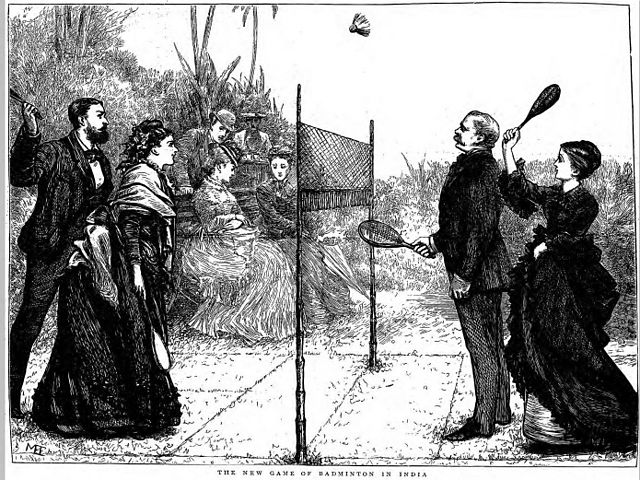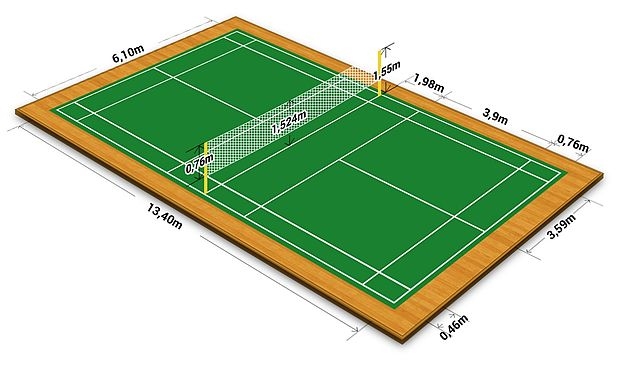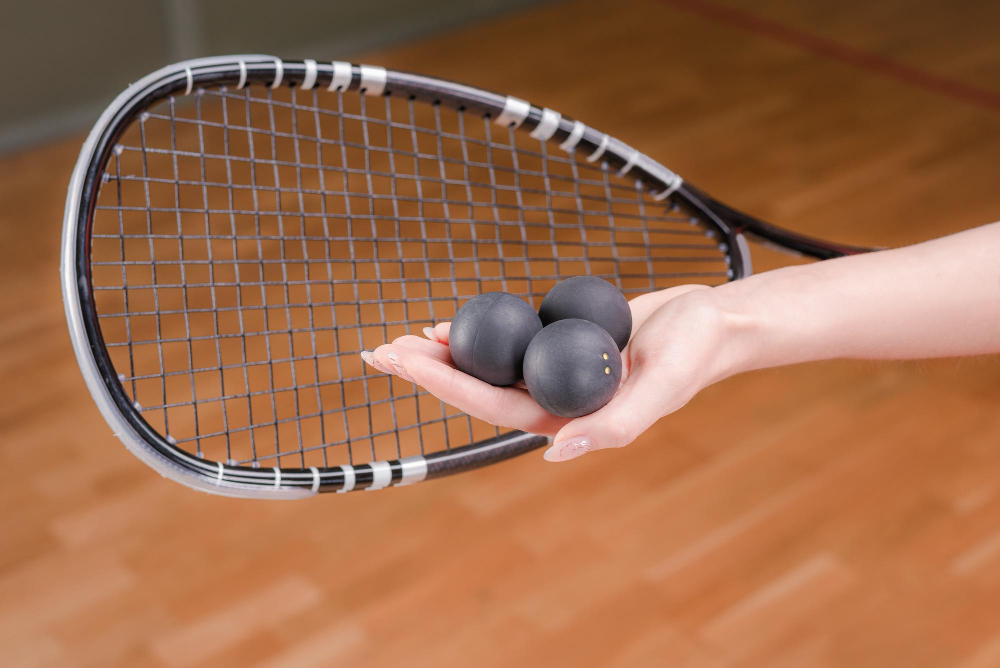Before going deep into the guide of badminton, let’s take some time out to understand badminton as a sport and its origin.
To give a gist, badminton is a racquet sport which is usually played in singles or doubles versions between two or four players. Hitting a shuttlecock over a net and into the court of the opposition is the goal and points are awarded when the other team fails to return the shuttlecock correctly.
A comprehensive and ultimate guide to Badminton
1. Origin
The game known today as badminton originated from battledore and shuttlecock played in ancient Greece, which was later played in India by British colonialists in the mid-19th century as the name ‘Poona’ with a bit of their own modifications.
It soon became popular with the elite, and its immense popularity led to the formation of the Badminton Association of England in 1893. The rules of the game were formalized. BAE organized the first All England Open Badminton Championship in 1899, and it remains one of the most prestigious tournaments in the sport till date.
The International Badminton Federation (now the Badminton World Federation) was founded in 1934 by nine founding members: Canada, Denmark, England, France, Ireland, the Netherlands, New Zealand, Scotland and Wales For the development of the sport internationally.
At the 1972 Munich Olympics, badminton made its debut as a demonstration sport. It wasn’t until 1992, at the Barcelona Games, that badminton was recognized as an official Olympic sport. Since then, singles, doubles, and mixed doubles competitions have been included in every Summer Olympics.
2. Basic rules and gameplay
Toss: A coin toss determines who or which team will serve first and from which side they will start.
Serve: The server must hit the shuttlecock (usually known as a birdie) from below the waist height, sending it diagonally into the opponent’s service box. The players must remain stationary until the serve is made. As long as the player keeps winning points consecutively they retain their serve.
Scoring: All the matches be it singles or doubles are in the format of best-of-three games. The first side to 21 points wins the game. A point is scored on every serve and rewarded to whichever team wins the rally. Next serve goes to the winning side.
If the score is 20-20, a side must win by two clear points to win the game. If it reaches 29-29, the first to get their 30th point wins.
Change of end: In badminton, players are required to change ends under specific conditions. They should change ends at the conclusion of the first game. If a third game is required, they should also change ends at the end of the second game. In the third game, the change of ends occurs when one side reaches a score of 11 points.
3. Court dimensions
Badminton court dimension for singles is 13.41m (44ft) long and 5.18m (17ft) wide. During doubles, the width extends to 6.1m (20ft). The net is 1.55m (5ft 1in) high at the ends and 1.52m high (5ft) where it dips in the middle. Each service court (four in total) is 3.96m (13ft) long and 2.59m (8.5ft) wide.
4. Playing strategies
Singles: Requires strategic shot placement, particularly aiming to displace the opponent and create openings on the court. The player must try to exploit any perceived weakness in their opponents’ games.
Doubles: Emphasizes more on teamwork and communication, with players needing to coordinate their efforts and strategies closely. Requires targeting specific opponents or exploiting court position to keep the pressure on while ensuring both players cover their respective areas effectively.
5. Equipments
The two main instruments used in badminton are the shuttlecock and the racket. Shuttlecocks are made of two materials: synthetic and feathered. With their great drag, feathered shuttlecocks offer a unique flying experience. Rackets for badminton are lightweight and can be made of aluminium or carbon fiber alloys.
Badminton is known for being a fast-paced game, requiring players to have good fitness, agility and physical fitness. Now that you’re here, if you have this skill, just pick up your racquet and smash the nearest court.
TOP 7 BADMINTON PLAYERS OF ALL TIME
Whether you are a professional or just a fan, the history of badminton is full of incredible players who left an indelible mark on the game. From an incredible display of agility to the way that taking control of play on the court, these top 7 badminton players set standards that inspire awe and excitement.
1. Lin Dan
- Lin Dan is considered the greatest badminton player of all time, the only “Super Grand Slam” winner, winning all nine major titles at the age of 28. He won two Olympic gold medals in 2008 and 2012. He is known for winning five world championships, and an explosive and unpredictable style of play, which earned him the nickname “Super Dan”.
2. Lee Chong Wei
- Lee Chong Wei is one of the most consistent players in badminton history, holding the World Number One ranking for an impressive total of 349 weeks. Despite winning three Olympic silver medals, he has a wealth of accomplishments, including 46 Super Series titles, that reflect his longevity and expertise in the game.
3. Taufik Hidayat
- Taufiq Hidayat is known for his incredible talent, he won the Olympic gold medal in 2004, World Championship in 2005, and became the first person to do both. He is known for his exceptional backhand smashes and kept holding in fierce competition with Lin Dan, contributing to memorable matches in badminton history.
4. Gao Ling
- Gao Ling is recognized as one of the most successful doubles players in badminton history, winning four Olympic medals (two gold, one silver, and one bronze). Her consistency and versatility, alongside five World Championship titles, make her a prominent figure in both women’s doubles and mixed doubles.
5. Rudy Hartono
- Rudy Hartono is considered a badminton legend, having won the prestigious All England Open title eight times, a record that still stands today. He has significantly impacted the badminton rankings and is known for his powerful net play and charisma on the court.
6. Peter Hoeg Gade
- Peter Hoeg Gade is one of Europe’s most successful players, holding the World Number One ranking for 64 weeks. Known for his inventive play and trademark shots, he has won five European Championships and remains an influential figure in the sport.
7. Tony Gunawan
- Tony Gunawan is unique for winning major titles with two different countries: Indonesia and the United States. His Olympic Gold in 2000 and two World Championships demonstrate his remarkable ability as a doubles player, securing his place among badminton’s all-time greats.














